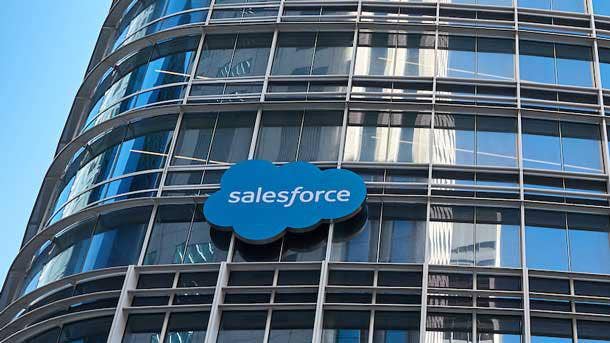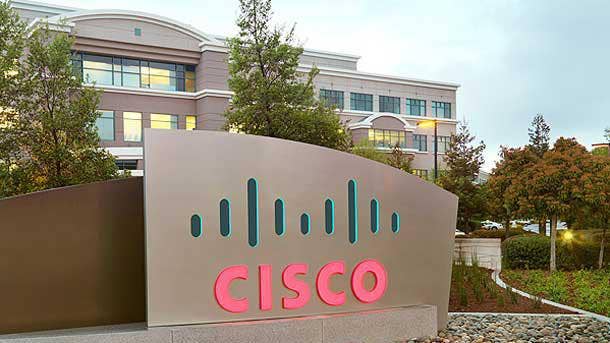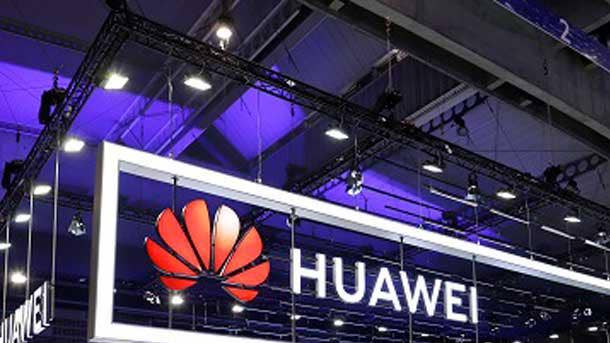The 6 Largest IT Companies By Enterprise Sales Growth In The Past Decade
CRN breaks down the top six IT vendors who moved the needle the most in enterprise sales from 2009 to 2019. “There has been a radical change in the enterprise over the decade,” says John Dinsdale, a chief analyst at Synergy Research Group.

The Biggest Enterprise Needle Movers
A total of six companies grew their annual enterprise revenue by at least $16 billion from 2009 to 2019 with no plans of slowing down growth over the next 10 years.
According to new data by Synergy Research Group, six IT vendors collectively drove a whopping $180 billion in new enterprise sales over the past ten years. John Dinsdale, a chief analyst at Synergy Research Group, spoke to CRN about the six companies who are leading the world in terms of enterprise sales growth.
“There has been a radical change in the enterprise over the decade,” said Dinsdale. “Remember in 2009 when Amazon and Google were barely present in the enterprise, Salesforce was still in its early days and Microsoft’s enterprise sales were only a small fraction of what they are today?”
The main market segments that supported enterprise growth were cloud infrastructure services and software-as-a-service, followed by unified communication, Ethernet switching and servers. Synergy’s research covers sales to enterprises and service providers, which excludes consumer and devices revenue such as mobile phones and PCs.
Here are the top six IT vendors who moved the needle the furthest in enterprise sales over the last decade.

6. Salesforce
Enterprise Annual Revenue Growth: $16 billion
The San Francisco-based cloud application giant was able to gain such a significant foothold in the enterprise market over the past decade thanks to its innovation and sales strategy for CRM software-as-a-service (SaaS). Salesforce grew annual enterprise revenues by $16 billion from 2009 to 2019.
“Salesforce enterprise triumph is all about its CRM software as a service, which it championed,” said Dinsdale. “It passed the billion-dollar revenue milestone in 2009 and in 2019 will hit $17 billion. CRM remains the core of its business although it does also have SaaS offerings in other segments and generates significant revenues from its PaaS platform.”
Salesforce has bullish growth plans in store for 2020. In one of the most significant acquisitions of 2019, Salesforce acquired business analytics and data virtualization software star Tableau for $15.7 billion in August. Salesforce said the combination of its CRM applications and Tableau business analytics software would create a digital transformation powerhouse.

5. Cisco
Enterprise Annual Revenue Growth: $17 billion
The San Jose, Calif.-based networking kingpin grew annual enterprise sales by $17 billion from 2009 to 2019 thanks to solid growth across switches and network security as well as collaboration services. Cisco has been the consistent worldwide leader in enterprise networking sales for the past decade.
“Cisco’s growth has slowed down over the last few years, but over the decade as a whole, it has seen strong growth across much of networking – switches, WLAN, network security – plus collaboration, servers and services,” said Dinsdale.
Cisco has shifted its focus in recent years to providing more software and services, while also doubling down on innovative technologies such as software-defined WAN. Cisco’s innovation charge to drive sales over the next decade came last month with the introduction of a new networking silicon architecture dubbed Cisco Silicon One and a new high-performance router platform. The company is referring Cisco Silicon One as the “Internet for the Future” as future applications are going to reach beyond what current infrastructure can support.

4. Dell Technologies
Enterprise Annual Revenue Growth: $31 billion
The enterprise annual revenue growth gap between No. 4 Dell Technologies and No. 5 Cisco is significant -- approximately $14 billion – as the Round Rock, Texas-based company was able to drive $31 billion in annual enterprise sales growth from 2009 to 2019. The largest factor in the infrastructure giant’s ability to grow enterprise sales so massively was Dell’s blockbuster $67 billion acquisition of EMC, which included VMware and Pivotal Software.
“Dell more than doubled the size of its enterprise sector business by acquiring EMC and VMware. So a lot of growth came from storage and software,” said Dinsdale. “But it has also achieved some very strong organic growth in its server business.”
Dell Technologies is currently the worldwide market share leader in servers, storage and hyperconverged infrastructure. In terms of expanding its enterprise foothold in the future, the infrastructure giant is doubling down on containers and Kubernetes via VMware as well as uniting its enterprise and commercial sales organization to simplify its go-to-market strategy.

3. Huawei
Enterprise Annual Revenue Growth: $33 billion
Enterprise sales has skyrocketed for the Chinese-based technology conglomerate after it expanded its strategy from selling almost exclusively to service providers to focusing on enterprise infrastructure including mobile, storage and networking. From 2009 to 2019, Huawei grew its annual enterprise sales by $33 billion by enhancing its product portfolio and a booming local market in China.
“In 2009, Huawei was almost all about selling to service providers and it has since doubled that size of that business. In the past decade, it has also launched an enterprise business which is now generating well over $10 billion in annual revenues,” said Dinsdale. “So in terms of its enterprise plus service provider business, the ten year growth has come primarily from mobile infrastructure, a broad range of networking gear, servers, storage and services.”
Dinsdale said Huawei’s total revenues are now about six-times what they were in 2009 with approximately two-thirds of the growth coming from its consumer division thanks to the launch of its mobile phone business.

2. Amazon
Enterprise Annual Revenue Growth: $34 billion
Amazon’s astonishing $34 billion growth in annual enterprise sales over the past ten years can be attributed to the rise of Amazon Web Services which has since disrupted the IT world. AWS has emerged as the global public cloud leader and is building new data centers to keep up with the demand faster than nearly any other company in the world.
“Amazon’s enterprise growth is all about AWS of course. It has gone from a fraction of a billion dollars in revenue in 2009 to a $35 billion business in 2019,” said Dinsdale.
In a recent CRN interview with AWS CEO Andy Jassy, the public cloud leader said he is forever focused on providing the most cutting-edge services at the lowest prices possible including the next generation of AWS Lambda serverless capabilities as well as technologies like purpose-built robotics.
“We have a plan that is very ambitious over the next few years,” said Jassy. “You can look at every area you can imagine.”

1. Microsoft
Enterprise Annual Revenue Growth: $49 billion
In 2009, Microsoft was already one of the biggest sellers of enterprise technology. However, over the past ten years it has grown those revenues by almost 150 percent to become by far the biggest player in the sector thanks to growth in a variety of areas including public cloud and collaboration. The Redmond, Wash.-based software giant was able to increase its annual enterprise revenue by $49 billion from 2009 to 2019.
“When it comes to Microsoft, growth came from a variety of areas – Azure, Microsoft Office, Office 365, server products and operating systems, Skype for Business, [Microsoft] Dynamics, LinkedIn -- the list goes on and on,” said Dinsdale.
Microsoft Azure launched in 2010, initially dubbed Windows Azure, and currently holds the No.2 market share leader position in public cloud. Thanks in part to Microsoft’s enterprise wins over the years, annual spending on cloud infrastructure services surpassed data center hardware and software spending in 2019. Last year, Microsoft crossed the $1 trillion market capitalization mark.